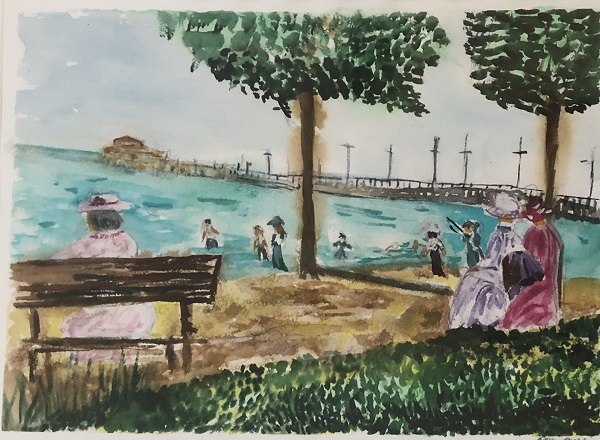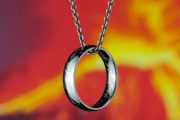As always, I’d taken the trolley to the Britannia trolley station after the shop where I worked in Ottawa closed for the day. Under the twinkling lights of the Park Pier was the most romantic place to be in all of the Ottawa area everyone said, and I was only 16, and I wanted to be there too. Every summer weekend, people packed the streetcars going west, and then joined up with all the others who biked or walked to Britannia Park.
The Ottawa Electric Street Railway Company introduced electric streetcars in 1891. About 10 years later, a young boy on his way to school was hit and killed on Albert Street by the number 37 streetcar. I heard his mother became hysterical every time she saw the number seven on a streetcar and in hearing this, Thomas Ahearn, a partner in the Ottawa Electric Railway Company, ordered that the number seven be removed from all Ottawa streetcars. I guess that’s true, because I haven’t seen a seven on a streetcar, and I take them often.
In my mind, we were a couple, and as much as I, he loved watching the yachts sailing from the Britannia Yacht Club, our picnics in the park, our walks along the sandy beach and around Mud Lake. And oh, watching movies outdoors on the screen was so amazing. Often I’d bring my maroon blanket, and we’d spread it out on the grass for our picnics, tossing leftover crumbs to the squirrels and the chipmunks.
The two of us took excursions up the river on the G.B. Greene, the double-decked side-wheeler. It picked up passengers from both sides of the river and took them to Chats Falls, and after a two-hour picnic break brought them back home again. We especially liked the “Venetian Nights” moonlight cruises.
Well, I imagined we did.
I remember the excitement when the Ottawa Electric Railway Company first developed the park. When the illuminated pier was finished, I sparkled just to be there with my John in the happy days before the First World War.
Well, actually, we never saw each other anywhere but Britannia Park. I went every week to see him. I had not much else to do in the few hours I wasn’t working, and he was always on my mind.
I was devastated and worried in 1914 when I read, in The Ottawa Journal, his name on the list of the men who were off to the War.
I continued working at Caplan’s, a small dry goods shop, but there was no reason to take the streetcar to Britannia any more. In 1916 the store moved to Rideau Street. It keeps growing, and it’s a department store now, and I’m the manager of the hat and glove department. I still live in a rooming house nearby.
I found out last year that he’s in the veterans’ hospital. There was a while I wasn’t allowed to visit him, because of quarantine for what they call “The Spanish Lady” influenza, the Spanish flu epidemic. I was very lucky not to catch it, like so many people in my neighborhood near the railway. Now that’s mostly over, I visit him every day after work; the staff thinks I’m his niece. I tell him stories about how we danced on the pier, and how he played the trumpet. I can see his eyes twinkling, and his head tosses back and forth as I sing “I Can’t Tell Why I Love You But I Do.”
I put the diary down and checked my phone for the time, shocked at how much time had gone by. I was going to be late to my “shop girl” – new phrase! – job as a barista on Carling. I should take the tin and the diary with me, I should type its words into my blog or Facebook, I should bring this girl like me into 2025. Instead, I put the diary back in the tin, and the tin underneath the rock. I can’t tell you why I did it. But it’s there if you want to find it.





